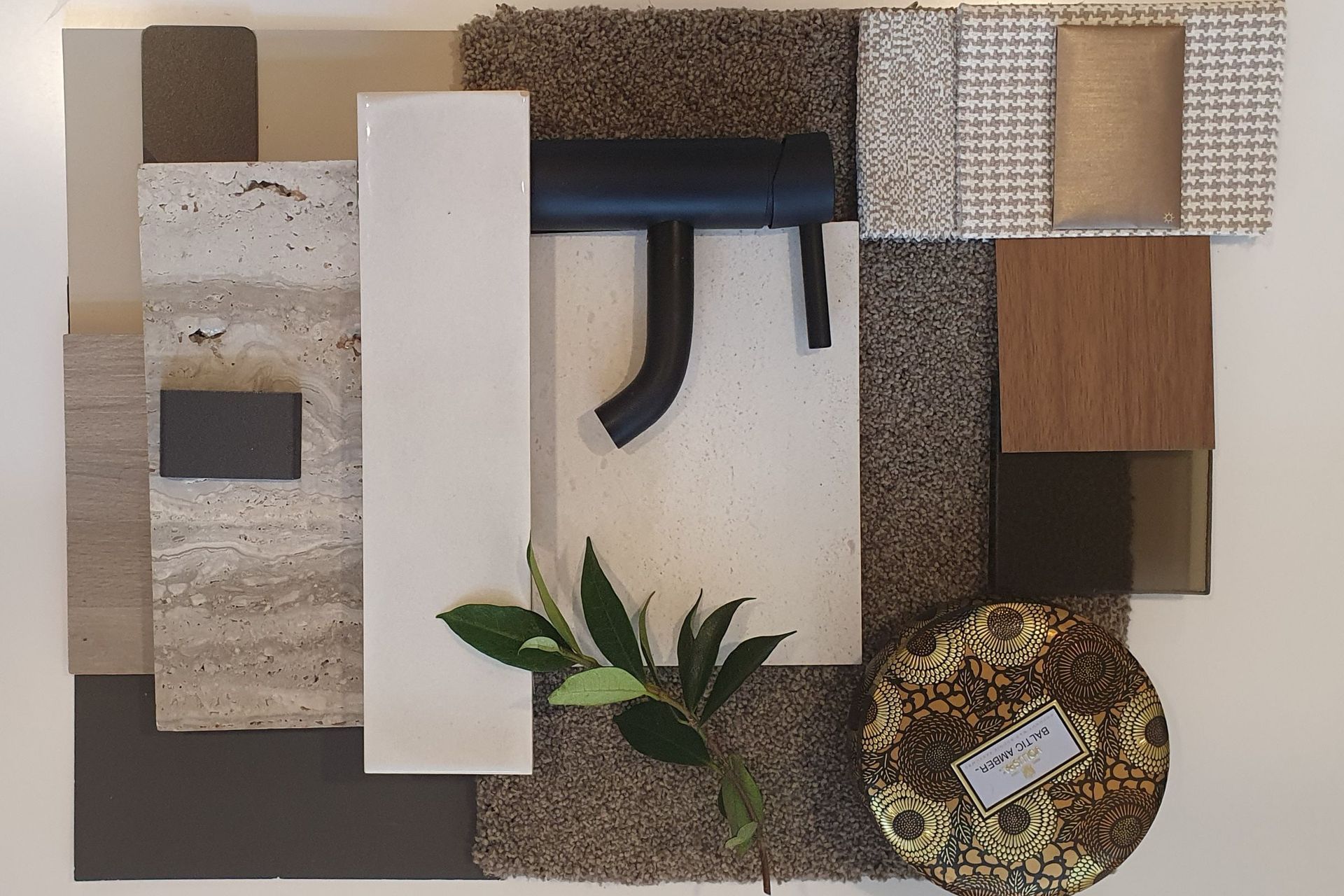How to style a mood board with Celia Visser
Written by
07 February 2022
•
6 min read

When you’re putting a materials board together, what do you consider?
The space, the outlook of the room or home and the client’s individual taste. The colours and textures need to suit the client’s personality and the mood they are trying to portray. How much natural light does the room have? If a room is north-facing then the choice of fabrics and products will have a bearing on this decision. I believe every client is unique and so their homes should reflect their family and personalities. I don’t believe that following the latest trends is always the best answer for each client!
Tell me about the mood board you’ve created here. Who were the clients and what was their brief?
My client wanted her apartment to be elegant and refined. She loved the background wall colour of Resene Akaroa; this complimented her existing stylish classic furniture, allowing the whole scheme including the new kitchen and en suite to sit comfortably within the open-plan space. The kitchen was small and not very workable, so we removed a non load-bearing wall to open the room to have unrestricted access and view of the living space and courtyard garden beyond. This increased the size, visually, of the apartment without major building works. The footprint of the en suite and laundry were left unchanged, but using different products a new vanity, cabinetry benchtops and colour completely changed the feel and mood of the room.

What was the starting point for the material palette for this project?
The walls and client’s existing pieces of furniture that she wanted to keep. The sofa was to be recovered, and the dining table replaced, but once we had confirmed the paint colour for the walls and carpet, the kitchen products all other choices flowed naturally from that point to all rooms.
What are your top tips and tricks for creating an interior scheme?
I like to approach the whole space, but then access each area independently depending on if it’s a room or a whole house renovation. If it’s a single room, my thinking is ‘How will it relate or flow in use, colour and mood to rest of the house?’ If the whole house is being renovated then you have the chance to start again from scratch and possibly rethink the spaces differently. Does this space still work for the clients? Does it need a full interior redesign? Is the kitchen in the right space and does the layout still work in 2022? Often families’ needs and dynamics have changed over the ensuing years and what may have worked then doesn’t now. My question to clients is: what feeling are you trying to achieve? Restful, energetic, industrial, character? Whatever it is, do you think you can live with this layout for the next 10 to 15 years? Trust your designer and make sure you discuss all design details and the budget, and don’t sign off products until you are completely happy. If you don’t trust the designer and their designs then best to move on to someone you do. Don’t get advice from family or friends, they will have different ideas and tastes to you and their home and outlook will be completely different to yours, it only confuses the situation. A good designer is completely independent and will design for your family and their unique situation and tastes and have open communication with you.
What’s your top tip for choosing the right samples?
If you are choosing your own products, always look into product labels to see that the chosen product will last the distance and achieve what you are expecting. If you are on a tight budget, choose the best products you can afford. Colour is very important and paint can change a whole mood and look of a room but don’t overdo it. When choosing paint samples, get a large sample, or paint the wall if it’s neutral, but don’t put different paint colours next to each other as each one will have an effect on the other. Look at them in different lights and separately.

How do you combine texture and colour?
Texture can be combined with colour in many ways. The obvious ways are on drapes or furniture fabrics, either in variations of fibre or pattern; wallcovering can also be intertwined; variations of benchtop finishes – leathered, honed, smooth or shiny; and tiles in both differing shapes and gloss levels change a room’s feeling. Mutual tones or tints of a colour or texture is a great way to blend similar colours.
If seeking a neutral colour scheme, I always intermix textures or pattern to give variety and interest to a room. There are so many ways to achieve varying degrees of the same colour which don’t look bland.
If someone was afraid of incorporating colour into their home, what would you suggest?
Don’t be afraid of colour – look to nature, colour is everywhere and nature would be such a different place if we didn’t have colour! If you haven’t used colour much before, start with highlights in accessories that can be changed without too much expense. People often think if I love a colour and wear it often it will work in my home, this isn’t always the case as you change clothes daily but with our rooms we want the colour to enjoy for a long time. Use colour like most things: in odd numbers so it doesn’t overwhelm the space; bring a colour into three items.
What’s your key advice for anyone looking to renovate an interior space?
Seek help from a qualified designer, check out their website and portfolio and ask for references. Some homeowners are very talented with interior colour schemes but don’t know enough about the technical side of design. It also depends on what you want to renovate; some interior decorators are good at colours or furniture, but not qualified enough to design kitchens and bathrooms – which require a completely different skill set and qualification.
Move out if possible, staying in the home depending on how large the alterations are, makes it so much harder for both client and necessary trades. Renovating is stressful, so you want to know that you will be thrilled with the end result. Having one person project co-ordinate the whole refurbishment takes a lot of the stress out of the project for the client